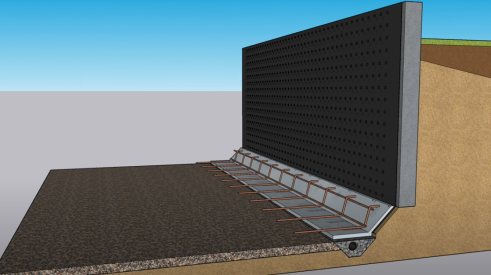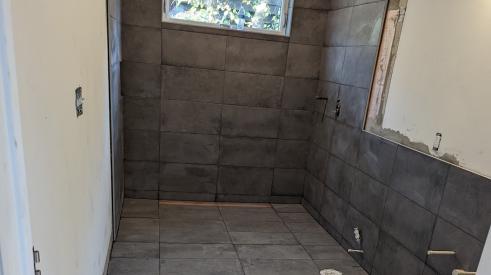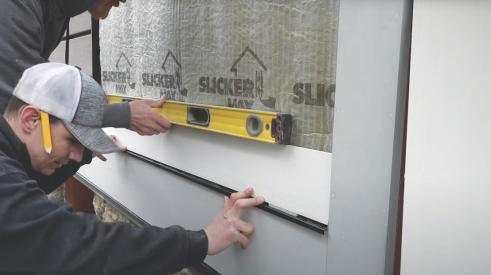Nobody likes change orders, but they’re a remodeling fact of life. Fortunately, inevitability—like adversity—leads to invention. We interviewed 11 remodelers via phone and email to find out how they handle the unknowns, the paperwork, and the client anxiety that are the hallmarks of remodeling change orders. Out of that exchange came these 10 rules. Listen up.
RULE 1. Define what you mean by a “change”
Most remodelers consider a change to be anything that alters the scope, schedule, or cost of the work. Some also write a change whenever any spec is altered, even something as small as switching paint colors; others document small changes like this in weekly client meetings. Whichever path you choose and whatever you call it (most prefer “Change Order” to “Additional Work Order”), the important point is that everyone involved understands what the project includes and what it doesn’t. That applies equally to the client, your team, and your trade partners. Otherwise you’ll end up eating the cost of changes you didn’t know were happening until long after the fact.
“We use a change order anytime something differs from the original contract documents, whether it’s to close an allowance, describe additional work, make a clarification, or change a completion date.” —George Weissgerber
RULE 2. Use a standard form
Change orders can eat into profits if they aren’t properly executed in a timely way. It helps to have a consistent process and use a standard form. Most remodelers we talked with use either a Microsoft Word or Excel document; some use accounting software that generates change orders; and a few use both digital and preprinted forms.
“We use an Excel spreadsheet template and duplicate it for each new change order, which we save within the workbook as a new sheet. This way, we can tab between all the change orders for a given project within the same document.” —Michael Anschel
RULE 3. Be clear about who can handle a change order
This is important for two reasons. First, it helps expedite the change order process, which can bog down the job if there are too many chefs in the kitchen. And it also limits your liability for unauthorized changes—as when a trade contractor acquiesces to a homeowner request for additional work without notifying you.
That said, many of the remodelers we interviewed who give their field supervisors the authority to write change orders also set cost limits (the range is $1,500 to $5,000) and require a second pair of eyes (and sometimes a second company signature or initials) to prevent errors or oversights. Most use office personnel when design, engineering, or subcontractor input is required.
“Our production managers write them, not on-site lead carpenters. The PMs visit sites every other day as part of their regular routine, so they are on top of this stuff.” —George Hodges-Fulton
RULE 4. Adjust the contract price and the schedule
It seems self-evident, but inexperienced remodelers often fail to extend the completion date in the change order. Many also fail to consult with any affected trade partners and are then surprised to find trade work and availability extends the schedule longer than they thought it would. Equally important is to make sure clients understand that changes in the work will almost always delay completion of the project. If they insist on sticking to the schedule, then changes should be priced to reflect the increased effort needed to meet the deadline.
“We are required by [Pennsylvania] state law to tell clients how long a project will take, so our change order has a standard line that reminds us to add days.” —Bob DuBree
RULE 5. Limit the number of change orders
It’s a rare remodeler indeed who regards change orders as a profit center. For most, they are headaches that slow momentum, cause friction with clients, and suck time away from more productive work.
The most common—and likely most effective—strategy is to manage clients’ expectations early in the process. Every one of the remodelers we interviewed uses a preconstruction process aimed at reducing changes. That includes explaining early on how disruptive change orders can be, emphasizing client pain points, such as extra cost and delayed move-in dates. They make sure to carefully review the plans with clients and do everything they can to encourage clients to make all product selections before work begins.
Most clients don’t understand the cost implications of what they see as a simple request, so some remodelers throw out a ballpark figure before starting to prepare a change order. Some charge an administration fee to investigate and prepare a change. Sometimes the intent of the fee is to discourage clients from using the remodeler as a free estimating service. Other times the fee is there to establish the value of the time and effort the change order will require. And while most of the remodelers who incorporate this kind of fee never collect it, all agreed that it usually serves its purpose. Plus, waiving the fee makes clients feel like they are getting something back.
The extension of time is another matter: Waive it at your peril.
“Rather than use disincentives, we do everything we can to de-bug our projects and specify every item needed before we start the project.” —Steve St. Onge
“We have a $250 fee for running COs that impede our schedule, but we usually waive it as a sign of goodwill.” —Matt Breyer
“The fee is included in the CO as a line item. It’s not intended to be a disincentive, but rather to educate [homeowners] that our time is valuable. It’s not overhead, it’s a hard cost that they know you need to pay for.” —George Hodges-Fulton
RULE 6. Price changes properly
Most change orders include estimated direct costs for materials, labor, and subcontractors, plus a markup that is often stipulated in the contract. But what is sometimes omitted is the cost of preparing the change itself, which ought to be either a line item in the change order or built into the fee or markup.
Design/build firms are less likely to overlook this charge because they are accustomed to billing for preconstruction services. But even remodelers who typically provide free estimates ought to reconsider getting paid for their time working on change orders. Those charges, which ideally are explained to the owner at the time the contract is reviewed, are direct costs to the job that should include estimating time, plus the cost of design or engineering services.
“Our change orders include our standard markup, which includes admin fees. We bill hourly for the designer’s time as needed.” —Michael Anschel
“We try to price the additional work to properly cover any administrative efforts required.” —Matt Breyer
RULE 7. Get paid for changes as soon as possible
Procedures vary, but one thing that everyone agrees on is this: Don’t wait until the end. Change orders often add 10 percent or more to the cost of a project (some remodelers report project costs that doubled), and if you haven’t been documenting change orders and collecting payment right along, you may not see much of that money. Even with proper documentation (see the related article: “Is Email Enough for Communicating Project Changes?"), a client’s memory can fade; without proper documentation, they feel blindsided, and it can get ugly.
One solution is to collect full payment before the change order work begins. Another is to collect partial payments—say, 50 percent at signing, and the balance upon completion.
As with so many other things about change orders, the time to explain this process to the client is well before the job starts. The better they understand how change orders disrupt your schedule, cash flow, trade partners, and workforce planning, the more likely they are to agree to full or partial prepayment.
But even remodelers who typically collect full payment up front make an exception for larger changes. Trigger amounts for the remodelers we interviewed ranged widely, from $5,000 to $40,000, after which payments are scheduled into two or three installments.
What’s important here is that, even if your gut tells you to do the work first and ask for payment later, make sure “later” coincides with the day the change order work is completed; don’t wait until the end of the project.
“If the change is below $20,000, it goes on the next bill. Over $20,000, we create a separate draw schedule that is spread over three payments: upon signing, middle of the work, and at completion of the added work.” —George Hodges-Fulton
“Our PMs earn a bonus for timely completion. It’s to their benefit to shorten the construction process as much as possible.” —Bill Simone
“It’s all about training the client from the day you start design work. If we have done a good job, payment and paperwork are really never the problem. Use a structured process and stay with it; the rest takes care of itself.” —Andy Hannan
RULE 8. Know that sometimes a separate contract is better
It doesn’t happen very often, but sometimes a change request is better handled as a separate project. One clear case is when the client wants to defer the additional work to a later date. Rather than leave the current contract “open” via change order, it’s better to start over with a whole new agreement, budget, and schedule. Another clear case is when design or engineering work will seriously delay the original project.
In general, any change that represents a significantly different scope of work may call for a separate contract. How remodelers define a “significant change” varies considerably. As mentioned earlier, some companies have executed change orders that doubled the project cost. Some place more emphasis on how the added work will affect other committed work. Others use a separate agreement for work that represents an unusual risk or that greatly increases the risk of the work already under contract—for example, mold or asbestos remediation.
In the end, it’s a subjective call that nevertheless should be weighed in the light of objective factors.
“I can’t remember ever doing this, but we are considering it now because of schedules and previously signed and committed work.” —Bob DuBree
RULE 9. Set customer expectations
Good preparation is the key to success with change orders. Most rely on design and pre-construction processes that are so systematic, detailed, and comprehensive as to virtually eliminate the need for change orders once the project has begun.
One of the most common causes of change orders is allowances—particularly if you use change orders to close them out. Most allowances stem from client indecision about products and finishes, so most companies do whatever they can to help expedite those selections.
Another pain point is hidden conditions. Remodelers don’t have x-ray vision, and even though there are an increasing number of tools that make it easier to see what’s inside walls, there is still plenty that is hidden until demolition opens things up. If you anticipate a hidden problem that can’t be properly diagnosed without destroying finishes, it makes sense to give the client a heads-up. But even a general briefing on the inevitability of unknown conditions will make it easier to handle the change order.
You don’t want to bring a message of doom and gloom, but you need to set realistic expectations. You ought to be able to figure out from past job histories how much, on average, clients have spent on change orders for different types of projects. Sharing that information up front during budget discussions could pay dividends later.
“We spend more time on the front end to try to get everything 100 percent specified.” —Doug Selby
“We explain that if we assume a worst-case scenario for everything, our price would be prohibitive or else we would have to take invasive measures before giving our price.” —George Hodges-Fulton
RULE 10. Communicate, communicate, communicate
Change orders may be inevitable, but the stress and strife around them is not. One commonality among all of the remodelers we interviewed is their emphasis on constant communication. Prior to the start of work, good communication helps to set expectations. Once the job is under way, it heads off misunderstandings and confrontations.
Several companies we interviewed, for example, told us that many change orders are averted in regular jobsite meetings with clients, and that many small changes, such as paint color or hardware swap-outs that don’t involve added cost, are documented in meeting notes without a formal change order. The fact is that, these days, email, text messages, and photos taken with smartphones make it easy to keep clients apprised of issues that arise on the job, even if they are out of town or can’t reach the site.
The key takeaway here is that the better informed clients are, the more trust they have in the remodeler, and the more likely they are to make timely decisions that help bring projects to a successful conclusion, despite the inevitable hiccups every job encounters.
“With weekly meetings and regular conversation taking place, change orders usually are a done deal by the time they are written.” —Andy Hannan
Thanks to the following remodelers for sharing their ideas and experience with us.
Michael Anschel, Principal, Otogawa-Anschel Design+Build, Minneapolis
Matt Breyer, President, Breyer Construction & Landscape, Reading, Pa.
Bob DuBree, President, Creative Contracting, North Wales, Pa.
Andy Hannan, Production Manager, Mark IV Builders, Cabin John, Md.
George Hodges-Fulton, General Manager, BOWA Builders, Washington, D.C.
David Merrill, President, Merrill Contracting & Remodeling, Arlington, Va.
Steve St. Onge, President, Rhode Island Kitchen and Bath, Warwick, R.I.
Doug Selby, CEO, Meadowlark Builders, Ann Arbor, Mich.
Bill Simone, President, Custom Design & Construction, El Segundo, Calif.
Jon Vogel, CEO, New Outlooks Construction Group, Robbinsville, N.J.
George Weissgerber, Senior Vice President, Case Design/Remodeling, Bethesda, Md.
You can't escape them, but you can minimize the hassle and anxiety that remodeling change orders can cause. Here's how.
Add new comment
Related Stories
How to Retrofit Foundation Footings
To make a low-height basement a more comfortable living space, this remodeler digs deeper but needs to add support to do so
Crawl Spaces to Basements: Proceed with Caution
Converting a crawl space to other uses can upgrade a home and add significant value, but when done incorrectly, it can also be disastrous
Webinar: Project and Trade Management Musts—The New American Remodel 2023
Access the webinar here to learn project and trade management lessons from The New American Remodel 2023
How to Attach a Patio Roof to an Existing House
A graceful integration may mean more work but improved functionality and aesthetics
How To Improve Energy Performance in Existing Attics
There’s more to insulating the attic than attic insulation; there’s venting, air sealing, and misery
Model ReModel 2022: A Case Study in Sustainable, Thoughtful Construction
The eighth annual Model ReModel project features an accessory dwelling unit, designed for aging in place, attached to a 19th-century Victorian
Installing a Curbless Shower
Model ReModel 2022 features an ADA-compliant bathroom. The contractor shares the install process
How to Install PVC Bevel Siding Over Rainscreen
It’s a lot like installing wood bevel siding, except it won’t warp or rot. And it expands and contracts differently and for different reasons
Understanding How PVC Trim Moves
Anybody who’s used PVC in an exterior application knows that it moves seasonally. Just like wood, right? Not exactly












